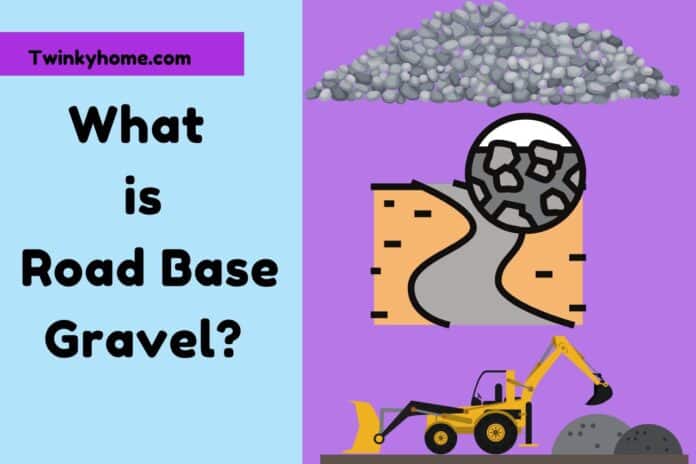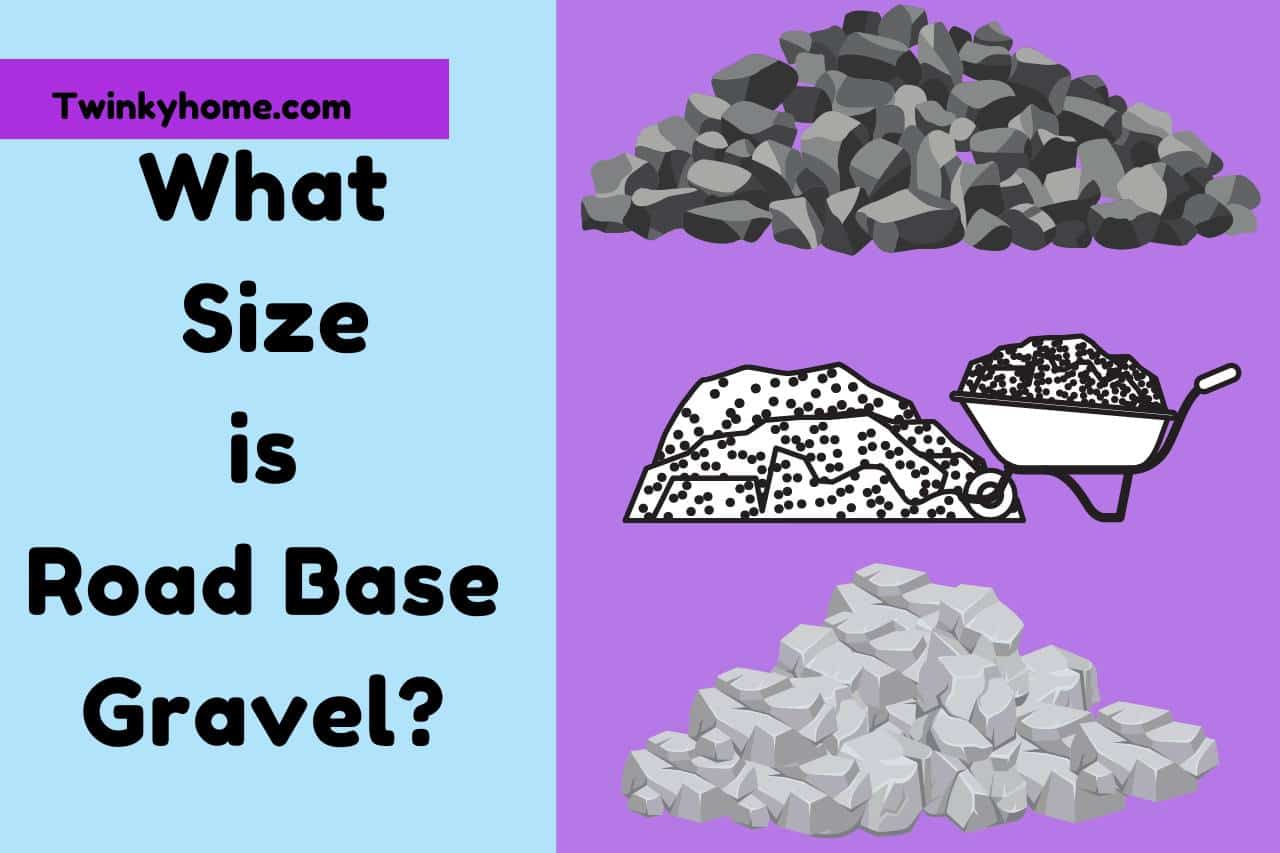The base course is a material used to construct parking lots, highways, and other paved surfaces. It is also frequently referred to as road base gravel. It is commonly built using crushed stone, rock, and sand to provide a stable and durable foundation for the paved surface. The different components used in creating road base gravel are defined in this article, along with the procedures involved in their production.
What is Road Base Gravel and How is it Made?
The base for roads, highways, and other paved surfaces is commonly made with road base gravel, a building material. Sand, gravel, and crushed rock are typically used in manufacturing it.
The right rock and gravel must first be chosen and crushed to produce road base gravel. Large equipment like bulldozers, front-end loaders, and crushers are frequently utilized. Screens are used to separate gravel and crushed rock into different sizes.
The rock and gravel are appropriately blended to make the road base gravel mixture after being segregated by size.
The mixture frequently combines varying rock, gravel, and sand sizes to create a stable and compact result.
The area where the road or other paved surfaces will be created is covered with the road base gravel mixture that was supplied to the construction site.
To create a flat and sturdy foundation, the mixture is spread out in layers, and then each layer is compressed using powerful machinery.
Is the Road Base the Same as Gravel?
Even though they are frequently combined when building roads, gravel, and road base are two distinct materials.
A road base provides the subgrade, the naturally occurring earth or rock beneath the road, with a solid foundation.
It is frequently formed of crushed rock, such as limestone or granite, but for increased durability, it may also incorporate cement or asphalt.
Sand, stones, and tiny rocks make up the loose material known as gravel, on the other hand. It is frequently used to provide a smooth driving surface over the road base.
Road base and gravel are distinct in road construction, yet they are both crucial parts of a well-built highway. While gravel offers a smooth driving surface and resists erosion, the road base stabilizes construction.
What Size is Road Base Gravel?
Crushed rock, stones, and gravel with a size range of 0.75 inches (19 mm) and smaller are widely used to create road bases.
The material’s precise size distribution may change based on the intended usage and the kind of rock employed.
Road base material is usually graded according to particle size to provide a more compact and durable foundation, with smaller particles filling up the spaces between larger ones. This will guarantee a level road surface that won’t deteriorate or change over time.
The quantity and type of base gravel for the road will vary depending on the soil type, climate, and intended use of the road, among other things.
To choose the right kind and dimension of road base gravel for your project, you must speak with an experienced engineer or contractor.
What are the Properties of Road Base Gravel?
Particle sizes of the road base gravel can range from gigantic boulders to magnificent sand. The particle size and distribution can impact the strength and stability of the base layer.
The density of road base gravel may differ based on the material’s makeup. It typically weighs about 2.5 tons per cubic meter. Water typically drains via absorbent substances instead of collecting on the surface.
This could reduce erosion and increase the overall toughness of the road. To ensure it is strong and able to support the weight of vehicles and other items, it should be compressed. It is frequently used with binding materials like cement or asphalt to increase stability.
Road bases are made of gravel that is made to last for an extended period, even in adverse conditions. It should withstand wear and tear over time, including cracking and erosion.
What are the Different Types of Road Base Gravel?
- Crushed stone, a type of gravel, is produced by crushing large rocks or stones into smaller ones. Crushed stone is widely used as the foundation for roads and driveways due to its high durability and capacity to provide adequate drainage.
- Small rocks, stones, and sand are combined to form the loose material known as gravel. It is commonly used as a base material for roads and driveways because of how simple it is and how well it drains.
- Sand is frequently utilized as the foundation material for driveways and roads. It is commonly mixed with other materials, such as crushed stone or gravel, to increase stability and drainage.
- Recycled concrete is the term for gravel that is produced from shattered concrete. Because it is safe for the environment and offers good stability, it is frequently used as a base material for roads and driveways.
- Asphalt, used to create smooth surfaces for driveways and roadways, is made from a mixture of crushed stone, sand, and liquid asphalt. It is typically applied as a top layer over a crushed stone or gravel base.
What are the Uses of Road Base Gravel?
Due to its sturdy foundation for the surface material, road base gravel is frequently used as a base material for roads and driveways. Road base gravel is also utilized as fill material when creating retaining walls, landscaping, or building foundations.
Road base gravel is frequently used as a drainage medium on building sites, driveways, and other surfaces to help prevent water from gathering there.
Using road base gravel creates a solid foundation that helps keep the soil in place, preventing soil erosion on slopes and hillsides. For building and road maintenance operations, recycled materials like crushed concrete and asphalt are used to make road base gravel, which comes in various forms.
How is Road Base Gravel Installed?
The initial step in prepping the area is to remove all vegetation and rubbish. Optimal drainage also requires a slanted surface.
The road base gravel is frequently laid out in stages, with the biggest stones going down first and smaller stones and sand coming up.
Heavy machinery crushes each layer, leading to a solid foundation. When the base layer is finished, the surface is graded to the necessary level using a motor grader or other large equipment.
The subsequent phase is applying the surface material, which, depending on the project, could be concrete, asphalt, or another substance.
The surface material is then compacted with a roller or other huge machinery to produce a smooth and durable surface.
Is Road Base Good for Drainage?
The road base may benefit drainage according to its composition and installation method. Crushed rock or gravel, the main components used to make a road base, may have a porous surface that permits water to pass through them.
Since the road base is generated with drainage in mind, water can move away from the road’s surface or another location where it is located.
However, the road base might not always be enough to guarantee adequate drainage. Additional drainage measures, such as installing drainage pipes or including a slope at the base of the roadway to carry water away from the region, may be required depending on the site and the amount of rainfall or other water sources in the vicinity.
Watch this one,
Video Credits – Diesel and Iron
You May Also Like
- Flagstone or Pavers for Your Budget : Choosing the Best Option
- Driveway Dilemma: Crushed Asphalt vs. Gravel – Which is Better?








![OGX Biotin And Collagen Shampoo Review [Updated One] Ogx Biotin And Collagen Shampoo Review](https://twinkyhome.com/wp-content/uploads/2022/03/Are-chicken-Super-Noodles-vegetarian-1-100x70.jpg)